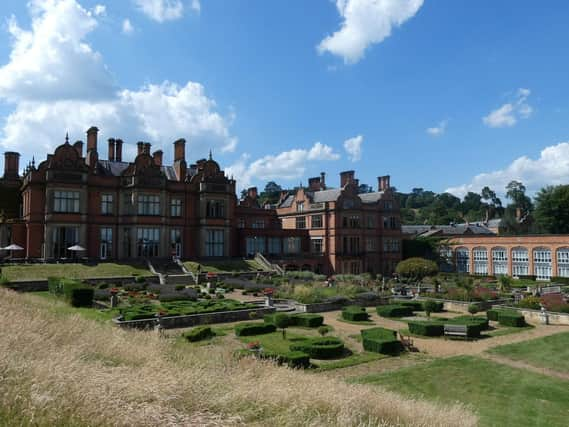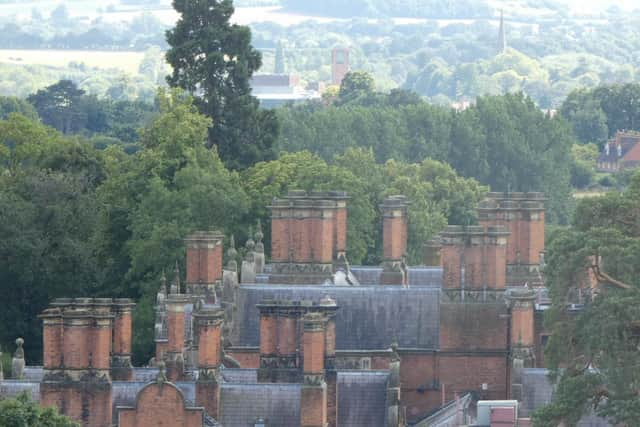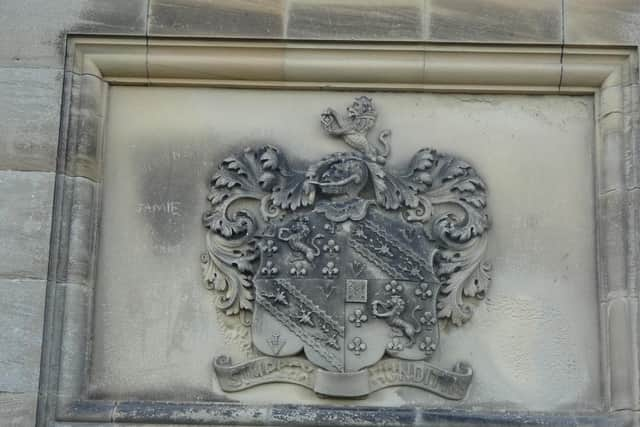Forgotten local histories: Remembering the fascinating past of a south Warwickshire hotel


George Evans-Hulme is an academically trained historian and researcher for the Kenilworth History and Archaeology Society. Over the next few weeks he will be looking at sites or buildings with local historic significance. This week he examines the history of Welcombe Hotel.
The Forgotten History of Welcombe Hills Part I – Welcombe Hotel
Advertisement
Hide AdAdvertisement
Hide AdJust over a mile north north east of Shakespeare’s Birthplace in Stratford Upon Avon is the Welcombe Hills country park. The park is 60 hectares of rolling grass and woodland, with commanding views over Stratford and the Avon valley. Within the park, nestled at the foot of an easterly dingle dotted with cows and ant hills, lies the Welcombe Hotel. References to an estate on the site of the hotel can be found as far back as 1132. However, it is the history of the present building that concerns us here.


The building is deceptively young, for whilst it has the appearance of a grand Jacobean palace, it was actually built between 1866-1870 (at a cost of £35,000) as a house for Mark Philips, the Manchester merchant who became one of the first modern MPs for the city. Philips was in possession of the estate from the mid-1840s but he did not elect to live there until twenty years later, when he chose to demolish the buildings standing on the site in favour of erecting a new house, the current building. Once completed, Philips lived there until his death in 1873.
The house then came into possession of Philips’ younger brother, Robert Needham Philips (another Lancashire merchant and, later, MP for Bury). It was this member of the Philips family who, in 1876, commissioned the great, Limestone ashlar obelisk that stands overlooking the hills a couple of hundred metres north of the property. At 37 metres/121 feet tall (perched on top of a 100m high hill), it dominates the surrounding landscape. The Philips brothers, as well as their father (also called Robert Philips) are immortalised in stone on the obelisk. A fourth panel shows the Philips family crest.
Robert Needham owned the house until his own death in 1890, at which point it was passed on to his daughter, Caroline. By this time, Caroline was married to George Otto Trevelyan (an MP who served as a cabinet minister under Gladstone), and the couple used Welcombe House as their winter home.
Advertisement
Hide AdAdvertisement
Hide AdBy the time it came into their possession, the Trevelyan’s had already acquired significant familiarity with the house, having been frequent visitors to Robert Needham during his tenure there.


Furthermore, the house had seen the birth of the couple’s youngest son, George Macaulay Trevelyan, in 1876. The young Trevelyan grew up to be one of the eminent historians of his day.
Indeed, he served as master of Trinity College, Cambridge, and Chancellor of University of Durham; one contemporary described him as ‘probably the most widely read historian in the world: perhaps in the history of the world’. Plus, he was committed to public duty, as shown by his heavy involvement in the National Trust and service as the first president of the Youth Hostels Association.
Trevelyan, writing in 1949, recalled fond memories of his time at Welcombe. By way of the house, he records that the family, when in residence, spent their time in a comfortable wing of the property rather than the main expanse of the larger rooms. And, during the wet, rainy days of winter, he and his two older brothers would enjoy playing ‘soldiers’, re-enacting battles with row upon row of lead
Advertisement
Hide AdAdvertisement
Hide Adfigurines. Trevelyan attributes his love of describing the battles of Garibaldi and Marlborough, respectively, to his love of playing this game in his youth at Welcombe. On sunnier days, Trevelyan would walk for hours over the hills in the park, including over the ridge to nearby Clopton House (of which more will be said in the next Forgotten Histories article), once home of a gunpowder plotter.
After Caroline and George Otto’s deaths, the house passed to the elder Trevelyan son, Charles (an MP and cabinet minister, like his father), in 1928. But, by 1931, it had come into the possession of the London, Midland and Scottish Railway company who adapted the house to use it as a hotel, a purpose it still has to this day.